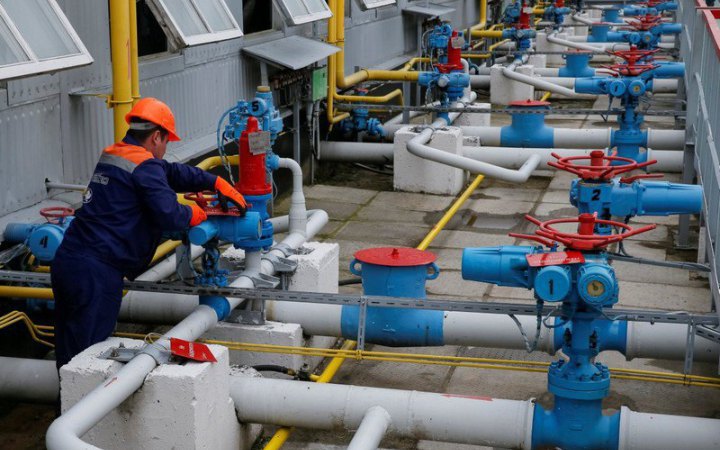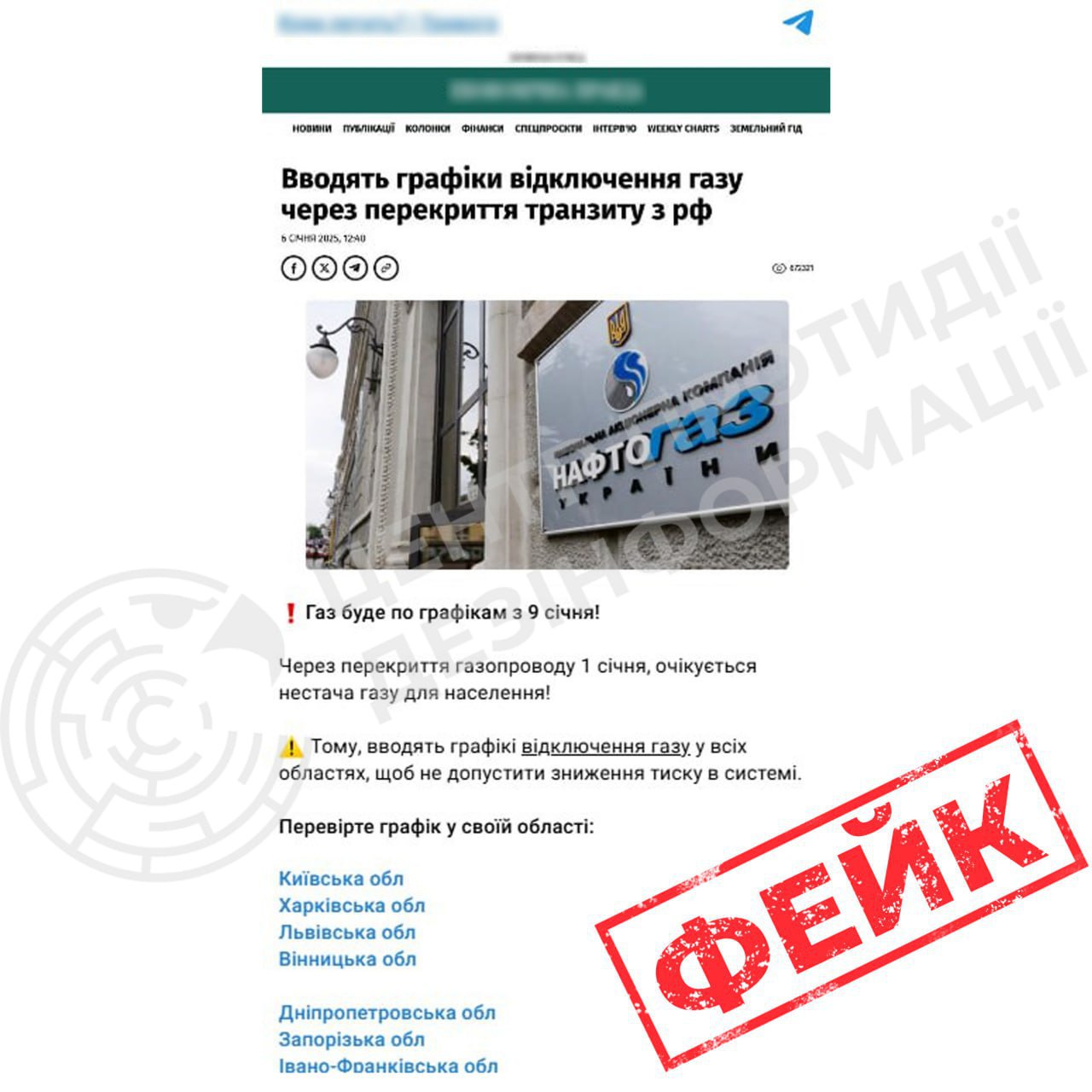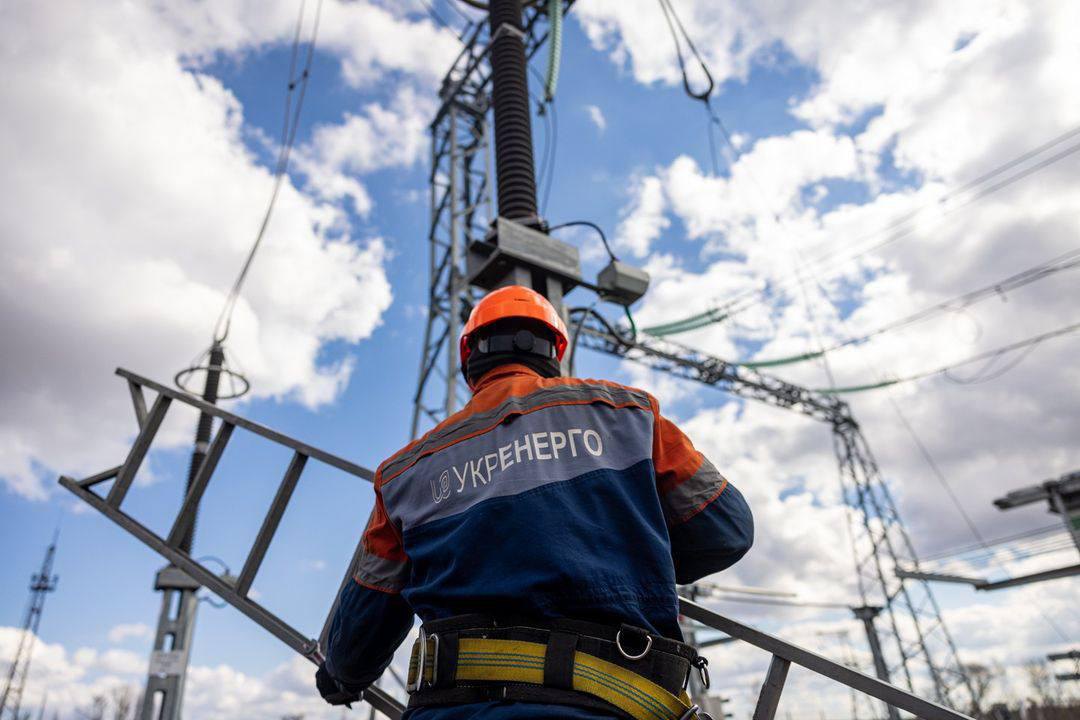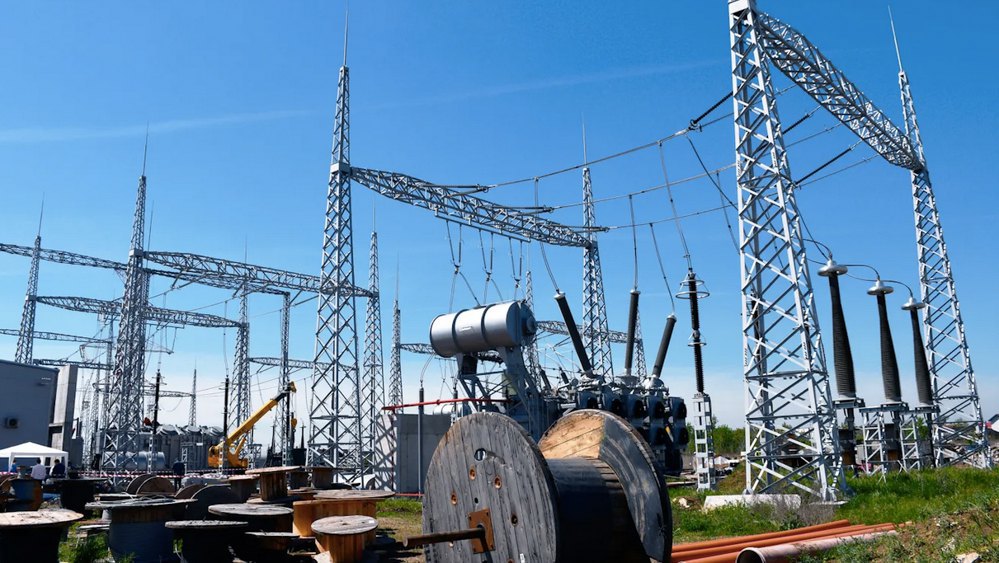
Will there be enough gas in winter?
Russia has launched a powerful new wave of disinformation about the Ukrainian energy sector. It began immediately after the suspension of Russian gas transit through Ukraine on 1 January. The Kremlin is trying to convince us that this has also hurt Ukrainians, although there is no reason to believe this.
Anonymous telegram channels spread a coordinated message that gas cut-off schedules were being introduced in Ukraine. At first, they scared consumers in Kyiv, but later they started to spread to the Regions. The fakes are disguised as media reports, and for detailed information, they recommend going to chatbots. However, this is not worth doing, as reports of widespread gas cut-offs are complete nonsense.

Firstly, there is no reason to introduce cut-off schedules: Ukraine has enough gas in underground storage facilities, and production of natural gas has not been stopped. The reserves amount to about 9.2 billion cubic metres. Naftogaz reported that they have the situation under control. And they called the information about plans to disconnect consumers on a massive scale a lie.
Secondly, it is technologically almost impossible to introduce shutdown schedules. There is no such procedure, and the only way to disconnect a particular consumer who, for example, does not pay their bills, is to disconnect them. At the same time, it is both impossible and dangerous to supply gas to certain streets or districts on a scheduled basis.
"I perceive such clumsy messages only as a Russian information and psychological operation. There is a big difference between electricity networks and gas networks, the latter operate under constant pressure. But in general, we have no problems with gas reserves so far. If you look at the gas balance in Ukraine, we produce more than we consume. Before the full-scale invasion, Ukraine consumed 29 billion cubic metres a year. We were producing about 20 billion. Now Ukraine consumes about 18-19 bcm," explained economist Oleh Pendzyn.
Since the beginning of the year, Naftogaz has had to repeatedly refute another fake: that the transit shutdown would increase gas prices for households.
The manipulations started around the fuel transportation tariff. The fee has indeed been increased by an average of more than 70 kopecks per cubic metre of gas since the new year. However, this will not affect the bills for household consumers, as the transportation fee was raised only for businesses.
"We reassure our customers: the gas tariff remains unchanged at UAH 7.96 per cubic metre until 30 April 2025 inclusive. No changes in gas prices for household consumers are expected. The moratorium on tariff increases for households remains in effect. Given the numerous requests for changes in the transit of Russian gas, we assure you that this will not affect the welfare of Ukrainian families," the Naftogaz press service said.
In 2022, the government introduced a moratorium on raising tariffs for gas, hot water and heating. So far, the Cabinet of Ministers has not announced that it is ready to let prices float again.
The only thing that could still affect the supply of gas to household consumers is Russian shelling. Although they have already happened before: The Kremlin attacked Ukrainian production and the above-ground infrastructure of underground fuel storage facilities with missiles and drones. However, at that time, it did not provoke significant and widespread problems for consumers.
What will happen to electricity tariffs
"The electricity tariff will increase significantly" is another lie spread by the same anonymous Telegram channels. But this Russian idea is a little more cunning: the false messages say that a kilowatt of electricity will cost almost UAH 7 in the summer.
This figure and date were not chosen by chance, because about seven to eight hryvnyas per kilowatt is the market price of electricity. The government published such calculations back in the summer. As for the date of the increase, in recent years, electricity prices have been changed on 1 June.

"There is currently no decision or draft decision on revising electricity tariffs for households. This issue is not on the agenda at all. Spreading false statements about tariffs is an attempt by the enemy to destabilise the situation in Ukraine," the Ministry of Energy of Ukraine said.
The last time the tariff for households was increased to UAH 4.32 per kilowatt was last summer. Back then, this process took place behind the scenes. Industry experts had been talking about the plans for several months. But the government only officially announced it on the eve of the increase, which was surprising to say the least. It probably still gives reason to speculate on the tariff issue, no matter how many times the Cabinet of Ministers repeats that they do not plan to change the cost of electricity.
"The only body that determines the price of electricity for the population is the Cabinet of Ministers. There have been no announcements about tariff changes. Naming any figures is just guessing on coffee grounds, nothing more. Such messages do not do anything good. They only create additional psychological pressure for the population," said Volodymyr Omelchenko, director of energy programmes at the Razumkov Centre.
The government is artificially restraining the cost of electricity for the population through the mechanism of assigning special obligations (PSO) to state-owned energy companies. That is, Energoatom and Ukrhydroenergo use their revenues to cover the difference between the market tariff and the one paid by household consumers.
In global practice, PSO is mostly a temporary mechanism. However, its prolonged use in a country at war is fully justified. However, we should not forget that cheaper electricity for the population is quite expensive for the state budget, as it costs tens of billions of hryvnyas annually. At its core, the PSO mechanism is a subsidy, but its extension to all consumers, regardless of income, raises many questions.
By the way, Ukraine's international partners, who provide us with financial assistance, do not require an increase in utility tariffs. There are no such conditions, in particular, in the Memorandum with the IMF updated in autumn. However, the government did commit to developing various options for reforming the energy sector to reduce the debt. Therefore, in the post-war period, Ukraine will not avoid the transition to market-based energy tariffs for households.
Exports have started working, and this does not harm Ukraine
Russian propaganda has once again begun to manipulate the topic of Ukrainian electricity sales abroad. Something similar happened last summer, when the country suffered from strict blackout schedules. Back then, the Russians spread fakes about electricity exports from Ukraine to Romania, allegedly causing the blackouts. However, the schedules were introduced only because of the actions of the Russians themselves, who had virtually destroyed Ukraine's thermal generation.

And while last summer, the Russian propaganda presented the figures of physical electricity flows as exports, now it is much more primitive. They say that the Ukrainian government is helping Moldova with electricity while some Regions of Ukraine are subject to restrictions, which is a complete lie.
The situation in the Ukrainian energy sector has stabilised since the beginning of the year. The consumption restrictions have so far been avoided, in part, thanks to electricity imports.
Indeed, since the beginning of January, Ukraine has already been helping Moldova, which is experiencing an energy crisis, with electricity. The country's only thermal power plant, which had previously been fuelled by Russian gas, was shut down. It was the largest electricity producer in Moldova, although the company is controlled by the pro-Russian regime in Transnistria.
Electricity is rarely supplied from Ukraine to Moldova, and only when the Ukrainian grid has a surplus of electricity. In other words, by helping the Moldovans, we are not acting to our detriment.
For example, on 2 January, Energoatom supplied electricity to Moldova. It did so at night, when the Ukrainian grid had a minimum level of consumption.








